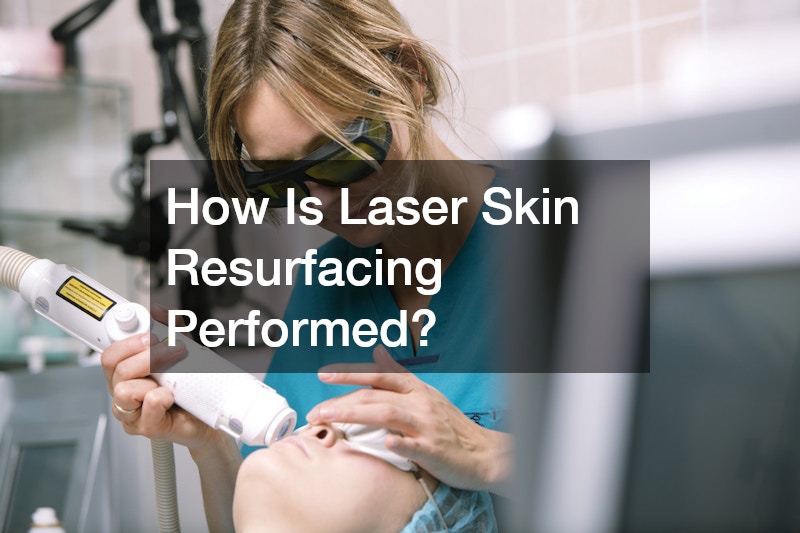In today’s world, the desire to maintain a youthful and refreshed appearance has never been more prominent. Advances in cosmetic procedures have made it possible for individuals to explore a wide range of treatments, from surgical facelifts to less invasive options like laser treatment and injectable enhancements. Whether seeking dramatic transformation or subtle rejuvenation, these procedures offer tailored solutions to meet diverse aesthetic goals.
A facelift remains one of the most effective surgical options for turning back the clock, addressing sagging skin, deep wrinkles, and loss of facial volume. However, the beauty industry has evolved, offering many other treatments such as eyelid lifts, Botox, and dermal fillers that can complement or serve as alternatives to a traditional facelift. Even cosmetic dentists have jumped into the fold, bringing straighter, brighter smiles to faces all over the country.
Choosing the right approach involves understanding each treatment’s benefits, recovery process, and expected results. This article dives deep into facelift options and a variety of cosmetic procedures, helping you make an informed decision to refresh your look confidently.
What Is a Facelift and How Does It Work?

Understanding the Basics of a Facelift
A facelift, medically known as rhytidectomy, is a surgical procedure designed to improve visible signs of aging in the face and neck. It addresses common concerns such as loose or sagging skin, deep folds around the nose and mouth, and jowls by tightening underlying muscles and tissues and removing excess skin. This combination of lifting and trimming restores a more youthful and refreshed contour to the lower face and jawline, often revealing a firmer, smoother appearance that can last for years.
Facelifts can also improve skin texture and reduce some wrinkles, giving a more balanced and natural look. While results vary depending on individual factors such as skin quality and aging patterns, many patients experience a significant boost in confidence post-procedure.
The Surgical Procedure Explained
During a facelift, an experienced surgeon makes precise incisions typically hidden around the ears and along the hairline to minimize visible scarring. Through these incisions, the surgeon carefully repositions underlying muscles and connective tissues, providing a more lifted and tightened foundation beneath the skin. Excess skin is then trimmed away to eliminate sagging.
Modern facelift techniques focus on preserving natural facial expressions and avoiding an overly “pulled” or artificial look. The operation generally lasts several hours and may be combined with other procedures such as eyelid lifts or neck lifts to achieve a comprehensive and harmonious facial rejuvenation tailored to each patient’s needs.
Recovery and Aftercare
Post-operative care is essential to ensure a smooth and successful recovery. Swelling, bruising, and mild discomfort are common during the first few days to weeks, but these symptoms gradually improve with proper care. Patients are typically advised to keep their heads elevated, avoid heavy lifting or strenuous activities, and follow their surgeon’s specific instructions regarding wound care, medications, and follow-up appointments.
Most individuals can return to normal daily activities within two to three weeks, though complete healing and the final results can take several months to fully manifest. Keeping the incision sites clean and protected from sun exposure helps minimize scarring and supports optimal outcomes.
Are Non-Surgical Facelifts Effective?
Different Types of Non-Surgical Facelifts
Non-surgical facelifts have become increasingly popular for individuals seeking less invasive alternatives with minimal downtime. These treatments include ultrasound therapy (such as Ultherapy), radiofrequency skin tightening, and thread lifts, among others. Each method works by stimulating the body’s natural collagen production, which helps improve skin firmness, elasticity, and overall texture over time.
Some non-surgical procedures can also address mild skin laxity and volume loss, offering a subtle lift to the cheeks, jawline, and neck. These options are ideal for people looking to refresh their appearance without the commitment or recovery time of surgery.
Pros and Cons Compared to Surgical Options
The primary advantage of non-surgical facelifts is their reduced recovery time, lower risk of complications, and affordability compared to traditional surgery. Patients can often return to work and social activities immediately or within a day. However, the trade-off is that results are generally more subtle and less durable than those achieved with a surgical facelift.
Non-surgical treatments often require multiple sessions spaced weeks apart, and ongoing maintenance is necessary to preserve the effects. They are best suited for individuals with early or moderate signs of aging rather than significant skin sagging or volume loss.
Results and Longevity
While non-surgical facelifts provide noticeable improvements in skin tightness and texture, the longevity of these effects varies depending on the treatment type and individual factors like skin condition and lifestyle. Typically, results last anywhere from six months to two years before additional treatments are needed.
Many patients use these procedures as a preventative or complementary measure to surgical facelifts, helping maintain a youthful appearance longer between surgeries or delaying the need for invasive procedures altogether.
What Is Botox and How Can It Enhance Your Appearance?
Mechanism of Action
Botox is a purified neurotoxin that temporarily relaxes specific muscles responsible for dynamic wrinkles caused by repeated facial expressions such as frowning, squinting, or smiling. By blocking nerve signals to these muscles, Botox smooths existing lines and prevents them from deepening over time, creating a softer, more youthful appearance.
Because Botox targets only the muscles causing wrinkles, it preserves natural facial expressions while reducing the appearance of fine lines. This subtle enhancement is a key reason for Botox’s widespread popularity in aesthetic treatments.
Areas Commonly Treated With Botox
Common treatment areas include forehead lines, crow’s feet around the eyes, and glabellar lines (the “11s” between the eyebrows). Botox can also be used to soften neck bands (platysmal bands) and to relax the jaw muscles for facial slimming in some cases.
Additionally, Botox treatments can be used off-label for areas like the nose or to improve the appearance of gummy smiles. Its versatility allows it to address a variety of aesthetic concerns beyond wrinkle reduction.
What to Expect During Treatment
Botox injections are quick and minimally uncomfortable, typically completed within 15 to 30 minutes in a medical office or med spa setting. Most patients experience only mild pinching or stinging at injection sites, and no anesthesia is needed.
There is little to no downtime, allowing patients to resume normal activities immediately. Results usually begin to appear within three to seven days, reaching full effect around two weeks post-treatment. The effects last three to four months, after which maintenance sessions are necessary to sustain the benefits.
What Is the Role of Microdermabrasion in Skin Refreshment?

Overview of Microdermabrasion Treatment
Microdermabrasion is a non-invasive exfoliation technique that removes the outermost layer of dead skin cells using fine crystals or a diamond-tipped wand. This process promotes cell turnover and reveals fresher, smoother skin.
Benefits for Skin Texture and Tone
Regular microdermabrasion treatments can improve skin texture, reduce fine lines, and even out pigmentation. It also enhances the effectiveness of skincare products by allowing better absorption.
Frequency and Maintenance
Most clients undergo microdermabrasion every two to four weeks during a treatment series. Maintenance sessions every one to three months help sustain results and support ongoing skin health.
Can Chemical Peels Revitalize Your Skin?
Types of Chemical Peels
Chemical peels use acidic solutions to exfoliate damaged skin layers, stimulating regeneration. Peels vary in strength from superficial (like alpha hydroxy acids) to deep (like phenol peels), tailored to skin type and desired outcome.
How Peels Work on Skin Rejuvenation
By removing damaged skin cells, chemical peels reduce wrinkles, sun damage, acne scars, and hyperpigmentation. They also promote collagen production, improving skin firmness and elasticity.
Expected Results and Side Effects
Mild redness and peeling are common after peels, with recovery time ranging from days to weeks depending on peel depth. Results include smoother, brighter skin that looks younger and more even-toned.
What Role Does Ultherapy Play in Skin Tightening?
Mechanism of Ultherapy
Ultherapy is a non-invasive treatment that uses focused ultrasound energy to stimulate collagen production deep within the skin. Unlike laser treatment, which targets surface layers, Ultherapy works beneath the skin without cutting or disrupting the surface.
Areas Suitable for Treatment
Common treatment areas include the brow, chin, neck, and décolletage. Ultherapy can lift and tighten sagging skin, improving contours especially in the lower face and jawline—similar goals to a facelift but without surgery.
Reviewing Efficacy and Safety
Results from Ultherapy typically appear over two to three months as collagen builds. While it doesn’t replace a surgical facelift for significant sagging, it’s a safe option for mild to moderate skin laxity. Side effects are minimal, mostly mild redness or swelling.
How Is Laser Skin Resurfacing Performed?

Types of Lasers Used in Aesthetic Treatments
Laser skin resurfacing uses concentrated light beams to remove damaged skin layers and promote new skin growth. Common lasers include CO2 and Erbium lasers, each with different depths of penetration and recovery profiles.
Advantages of Laser Resurfacing
This treatment addresses wrinkles, scars, sun damage, and uneven pigmentation effectively. It tightens skin and improves texture, offering a refreshed appearance that complements a facelift or can be an alternative for those avoiding surgery.
Potential Risks and Recovery
While results are impressive, laser resurfacing involves downtime—typically one to two weeks of redness and peeling. There are risks of pigmentation changes or infection if aftercare isn’t properly followed, so it’s essential to work with a skilled provider.
What Does Platelet-Rich Plasma (PRP) Therapy Involve?
How PRP Stimulates Skin Rejuvenation
PRP therapy uses your body’s own platelets, extracted from a blood sample, to stimulate collagen and tissue regeneration when injected into the skin. This encourages natural healing and improves skin tone and elasticity.
Treatment Areas and Protocol
PRP is often used on the face, neck, and décolletage. It can be combined with microneedling or performed alone. Treatments usually require multiple sessions spaced several weeks apart for optimal results.
Outcome and Longevity of Results
PRP enhances skin texture and reduces fine lines with results that develop gradually over several months. Effects can last up to a year, especially when maintenance treatments are done regularly.
What Should You Consider Before Choosing a Facial Treatment?
Consultation and Assessment
Before committing to a facelift or any cosmetic procedure, a thorough consultation with a qualified specialist is critical. They will assess your skin type, aging concerns, and overall health to recommend the best treatment plan tailored to your goals.
Comparative Analysis of Treatment Options
Surgical facelifts offer the most dramatic and long-lasting results but come with higher costs and recovery time. Non-surgical options like Botox, dermal fillers, and laser treatments provide less downtime and lower risk but may require ongoing maintenance.
Budgeting for Your Beauty Goals
Understanding the costs involved helps set realistic expectations. Surgical procedures generally have higher upfront costs, while med spa services and injectables accumulate over time. Many providers offer financing options to make treatments more accessible.
Other Popular Cosmetic and Wellness Services to Complement Your Facelift

Eyelid Lifts and Varicose Vein Treatment
Eyelid lifts can brighten and open the eyes, complementing a facelift by addressing droopy eyelids. Varicose vein treatment, while unrelated to the face, is a common cosmetic concern that can improve leg appearance and comfort.
Laser Hair Removal and Local Haircut Services
Many individuals combine facial rejuvenation with laser hair removal for smooth, hair-free skin. Regular local haircut appointments complete the refreshed look, supporting overall personal grooming and confidence.
Cosmetic Dentists and Dentistry
A radiant smile enhances facial aesthetics, making cosmetic dentistry procedures a valuable complement to facelift results. Procedures such as teeth whitening, veneers, and orthodontics help improve dental appearance and function.
Conclusion
Facelift procedures continue to be a gold standard for significant facial rejuvenation, effectively restoring youthful contours and addressing deep signs of aging. However, today’s beauty landscape offers an array of treatments—both surgical and non-surgical—that can refresh your look and enhance your confidence.
Whether considering a surgical facelift or exploring options like Botox, dermal fillers, laser treatment, or PRP therapy, understanding each treatment’s benefits, risks, and recovery processes is essential. Non-surgical facelifts and med spa services provide flexible alternatives for those seeking subtle improvements without extensive downtime.
Complementary treatments such as eyelid lifts, varicose vein treatment, and cosmetic dentistry help create a harmonious, refreshed appearance. Meanwhile, services like laser hair removal and local haircut appointments support ongoing self-care.
Ultimately, the best approach depends on your unique needs, lifestyle, and beauty goals. A consultation with experienced professionals, including acne dermatologists and cosmetic dentists, can guide you toward safe and effective choices. By combining expert care with a personalized plan, you can achieve lasting rejuvenation and enjoy the confidence that comes with a revitalized appearance.

